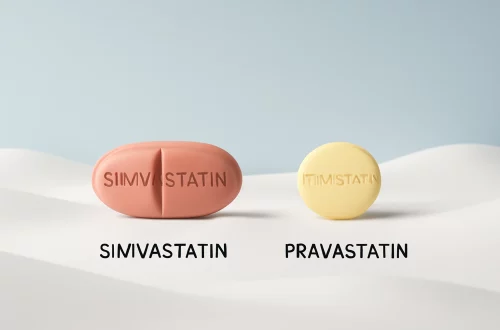
The Ultimate Guide to Choosing the Perfect Stretching Mat
Choosing the right stretching mat can significantly enhance your workout experience, whether you’re engaging in yoga, pilates, or simply incorporating stretching into your fitness regimen. With a plethora of options available on the market, it’s essential to consider various aspects that contribute to the overall quality and functionality of a mat. The right mat not only provides comfort and support but also helps prevent injuries and enhances your performance. As fitness enthusiasts become increasingly aware of the importance of proper equipment, the demand for high-quality mats has surged.
When selecting a stretching mat, factors such as material, thickness, texture, and portability come into play. Each of these elements plays a crucial role in ensuring that your mat meets your specific needs and preferences. Moreover, understanding the differences between various types of mats can help you make an informed decision. Whether you are a beginner or an experienced practitioner, the right stretching mat can make a world of difference in your practice.
In this guide, we will explore the key features to look for when selecting a stretching mat, helping you to find the perfect fit for your fitness journey.
Material Matters: Understanding Different Types of Mats
The material of your stretching mat is perhaps the most critical aspect to consider. Different materials offer varied levels of grip, cushioning, and durability, which can affect your overall performance. Common materials used for stretching mats include PVC, TPE, natural rubber, and foam.
PVC mats are widely popular due to their affordability and durability. They provide excellent grip and are easy to clean, making them a favorite among many users. However, they may not be the best option for those seeking an eco-friendly choice, as PVC is not biodegradable.
TPE (Thermoplastic Elastomer) mats are becoming increasingly popular for their environmental friendliness. TPE mats are made from a non-toxic material that is free from harmful chemicals. They offer a good balance of cushioning and grip, making them suitable for various types of workouts. Additionally, TPE mats are lightweight and easy to transport, which is a bonus for those who like to take their mat to classes or outdoor sessions.
Natural rubber mats are another excellent option, especially for those looking for a sustainable choice. These mats provide superior grip and cushioning, making them ideal for yoga and other stretching activities. However, it’s important to note that rubber mats may have a strong odor initially and can be heavier than other options.
Foam mats, often used for general exercise and stretching, provide great cushioning for joints. They are typically thicker than yoga mats and can be an excellent choice for those who prioritize comfort. However, foam mats may not offer the same level of grip as rubber or PVC mats, which can be a consideration for more dynamic workouts.
Ultimately, the choice of material will depend on your personal preferences, workout style, and any environmental considerations you may have. Ensuring that you select a high-quality material that meets your needs will help enhance your overall stretching experience.
Thickness and Cushioning: Finding Your Ideal Balance
The thickness of a stretching mat can greatly influence your comfort level during workouts. Mats typically range from about 1/16 inch to 1/2 inch thick. The right thickness for you will depend on the type of exercises you plan to perform and your personal comfort preferences.
Thinner mats, around 1/16 to 1/8 inch, are often preferred for activities like yoga, where stability and balance are crucial. These mats allow for better contact with the ground, which can enhance your balance and alignment during poses. However, they may not provide sufficient cushioning for those with sensitive joints or for exercises that require a lot of kneeling or lying down.
On the other hand, thicker mats, generally 1/4 inch to 1/2 inch, offer more cushioning and support, making them suitable for floor exercises and stretching routines. If you experience discomfort in your knees or back during workouts, a thicker mat may be the right choice for you. These mats can absorb impact better, providing added comfort during your sessions.
It’s also worth noting that while a thicker mat can enhance cushioning, it may compromise stability in certain poses. If you practice yoga or Pilates, you may want to strike a balance between cushioning and stability. Testing different thicknesses in-store, if possible, can help you find the perfect fit for your needs.
Additionally, consider how the thickness of the mat will affect portability. Thicker mats can be bulkier and heavier, making them less convenient for transport. If you plan to carry your mat to classes or outdoor settings, you may want to prioritize a lightweight option that still provides adequate support.
Texture and Grip: Ensuring Stability During Your Practice
The texture of a stretching mat plays a vital role in providing the grip necessary for various exercises. A mat with a non-slip surface can help prevent accidents and allow for smoother transitions between poses. Different mats feature various textures, which can affect both grip and comfort.
For instance, some mats have a smooth surface that can be comfortable to lie on but may not provide the necessary grip for standing poses or dynamic movements. On the other hand, mats with a textured surface can enhance traction, especially during sweaty workouts. If you practice hot yoga or tend to sweat a lot, a mat with a higher grip is essential to ensure safety and effectiveness.
Some mats also have a dual-sided design, offering different textures on each side. This feature can be beneficial for those who want versatility in their practice. One side may be designed for yoga, providing excellent grip, while the other side may be softer and more cushioned for floor exercises.
When selecting a mat, consider the type of exercises you’ll be doing most frequently. If your routine involves a lot of flow movements, such as in vinyasa yoga, you will benefit from a mat that offers high grip. Conversely, if you primarily engage in static stretches or gentle exercises, a smoother mat may suffice.
It’s also important to consider the maintenance of the mat’s texture. Some materials can wear down over time, losing their grip and becoming slippery. Researching the durability of the mat and following the manufacturer’s care instructions can help prolong its lifespan and maintain its effectiveness.
Portability and Storage: Making Your Mat Convenient to Use
For many fitness enthusiasts, the ability to transport and store a stretching mat easily is a significant consideration. Whether you plan to take your mat to classes, the gym, or outdoor sessions, portability features can make a big difference in your experience.
Lightweight mats are ideal for those who need to carry their mat frequently. Many brands offer mats made from lightweight materials that are easy to roll up and transport. Additionally, look for mats that come with carrying straps or bags. This added convenience allows you to keep your hands free while traveling to and from your workout locations.
Another factor to consider is the mat’s rollability. Some mats tend to be rigid and don’t roll up easily, which can be frustrating for transportation. Mats that are designed to be flexible and roll up compactly are more convenient for storage and travel.
When it comes to storage, think about how much space you have available. If you have limited space, you might want to choose a mat that can be easily stored in a closet or a small corner. Some mats are designed to be hung or can be stored flat, which can help keep your living space organized.
If you plan to use your mat in various locations, portability and storage features should be high on your priority list. A mat that is easy to transport and store will encourage you to keep up with your stretching routine, making it a valuable investment in your fitness journey.
In conclusion, selecting the right stretching mat involves considering various factors, including material, thickness, texture, and portability. By understanding your specific needs and preferences, you can find a mat that enhances your practice, providing comfort and support while helping you achieve your fitness goals.
**Disclaimer:** This article is not intended as medical advice. For any health-related concerns, please consult a qualified healthcare professional.




